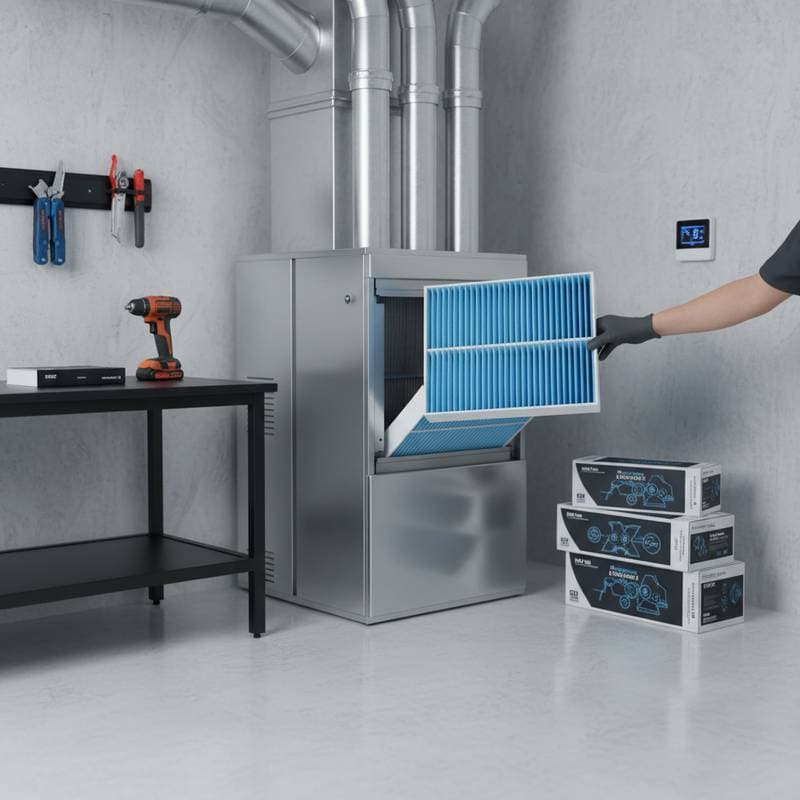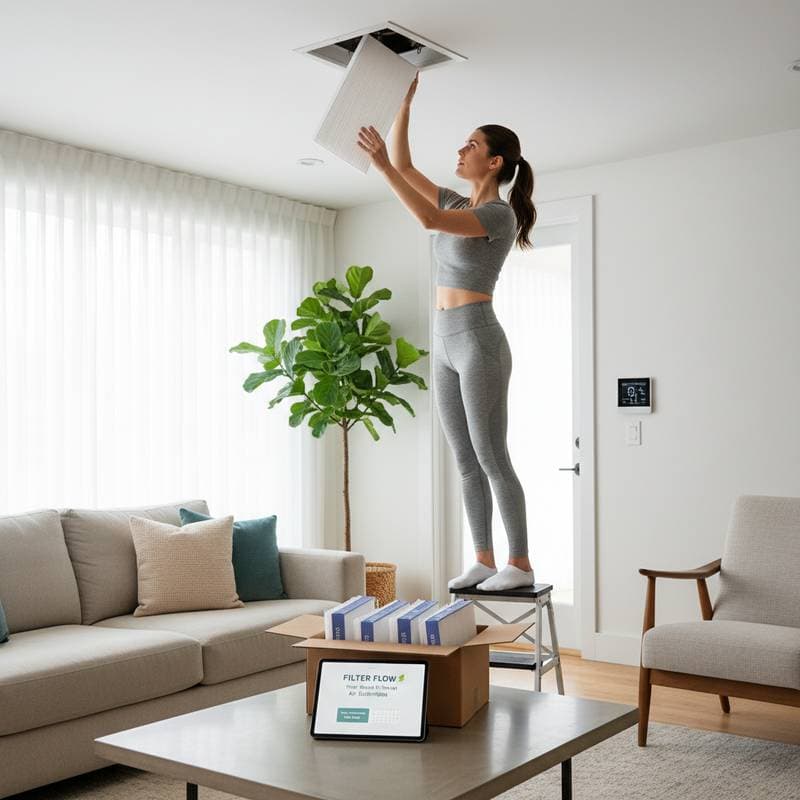Nanofiber Technology: HVAC Filters Designed to Last a Full Year in 2025
Homeowners often face the inconvenience of frequent HVAC filter replacements, which prove messy, expensive, and simple to overlook. Nanofiber filter technology addresses these challenges by offering filters that maintain efficiency and air quality for an entire year. This advancement simplifies home comfort while enhancing indoor health. The following sections explore the details of this innovation and its practical benefits.
Understanding Nanofiber Filter Technology
Nanofiber filters employ synthetic fibers thinner than a human hair to capture airborne particles effectively. These fibers form a dense, permeable layer that traps dust, pollen, pet dander, and microscopic pollutants. The design ensures superior filtration without compromising airflow in the HVAC system.
Unlike traditional filters made from thicker materials that clog rapidly, nanofiber versions feature a web-like structure. Particles adhere to the surface rather than penetrating deeply, preserving consistent airflow over extended periods. This efficiency reduces the strain on the HVAC system, lowers energy consumption, and extends equipment lifespan.
The Importance of Extended Filter Lifespan
Overlooking air filter maintenance restricts airflow, compelling the HVAC system to consume more energy. Such neglect elevates utility costs and accelerates system wear. Filters with a one-year durability resolve these issues comprehensively.
- Enhanced Convenience: Schedule replacements annually rather than quarterly.
- Sustained Air Purity: Performance remains steady, ensuring cleaner indoor environments.
- Energy Efficiency Gains: Optimal airflow minimizes power usage.
- Environmental Benefits: Reduced replacements decrease landfill contributions.
This integration of practicality and efficacy positions nanofiber filters as a significant upgrade for residential settings and sustainability efforts.
The Mechanics of Nanofiber Filtration
Nanofiber filters combine mechanical and electrostatic methods for comprehensive particle capture. Electrically charged fibers draw in fine contaminants like smoke and dust that evade larger barriers. Mechanical components secure bigger debris, creating a robust defense against pollutants.
The evenly spaced, ultra-fine fibers promote surface accumulation of dirt, avoiding internal saturation. This loading mechanism sustains high efficiency with low resistance, enabling the filter to operate effectively for up to 12 months. Homeowners experience reliable performance without frequent interventions.
Variables Affecting Filter Durability
Nanofiber filters aim for a 12-month service life, yet home conditions can vary outcomes. Consider these elements to maximize longevity:
- Ambient Air Conditions: Proximity to construction, traffic, or dust sources accelerates particle buildup.
- System Operation Frequency: Continuous heating or cooling demands faster debris accumulation.
- Household Factors: Multiple pets or allergens necessitate periodic visual assessments.
- Installation Quality: Secure seals prevent unfiltered air from circumventing the filter.
In typical residences, these filters outperform conventional pleated or fiberglass types significantly. Regular monitoring ensures optimal results.
Performing Filter Replacements: DIY or Professional Assistance
Most homeowners manage HVAC filter changes independently, and nanofiber models follow standard procedures with added infrequency. Follow these steps for safe execution:
- Deactivate the HVAC system prior to filter removal.
- Verify the size indicated on the filter frame.
- Align the new filter so the airflow arrow directs toward the blower.
Professionals verify system compatibility and efficiency, selecting appropriate MERV ratings. Consult a technician if uncertain about direction, fit, or specifications. Proper setup amplifies benefits in air purity and energy savings.
Common Questions About Nanofiber HVAC Filters
What Is the Actual Lifespan of Nanofiber HVAC Filters?
Under standard conditions, these filters endure up to one year. High-dust or heavy-use homes benefit from earlier inspections, yet they surpass traditional filters in duration.
Do Nanofiber Filters Suit Every HVAC System?
They integrate with most units when sized correctly and matched to the MERV rating. Review the equipment manual or seek technician advice before installation.
How Do Nanofiber Filters Enhance Indoor Air Quality?
They seize finer particles, such as pollen, fine dust, and smoke, beyond the capabilities of many standard filters. This action fosters healthier home atmospheres.
Are Nanofiber Filters Costlier Than Conventional Options?
Initial prices exceed those of regular filters, but extended use lowers annual expenses. Savings arise from fewer purchases and improved system efficiency.
Is Cleaning and Reusing a Nanofiber Filter Feasible?
These filters resist washing, as water compromises fiber integrity and filtration power. Adhere to manufacturer guidelines for full replacement.
Optimizing Home Comfort Through Advanced Filtration
Adopting nanofiber HVAC filters streamlines maintenance while elevating air quality and efficiency. Homeowners achieve lasting benefits in convenience, cost reduction, and environmental stewardship. Integrate this technology to transform routine upkeep into a seamless aspect of modern living.





